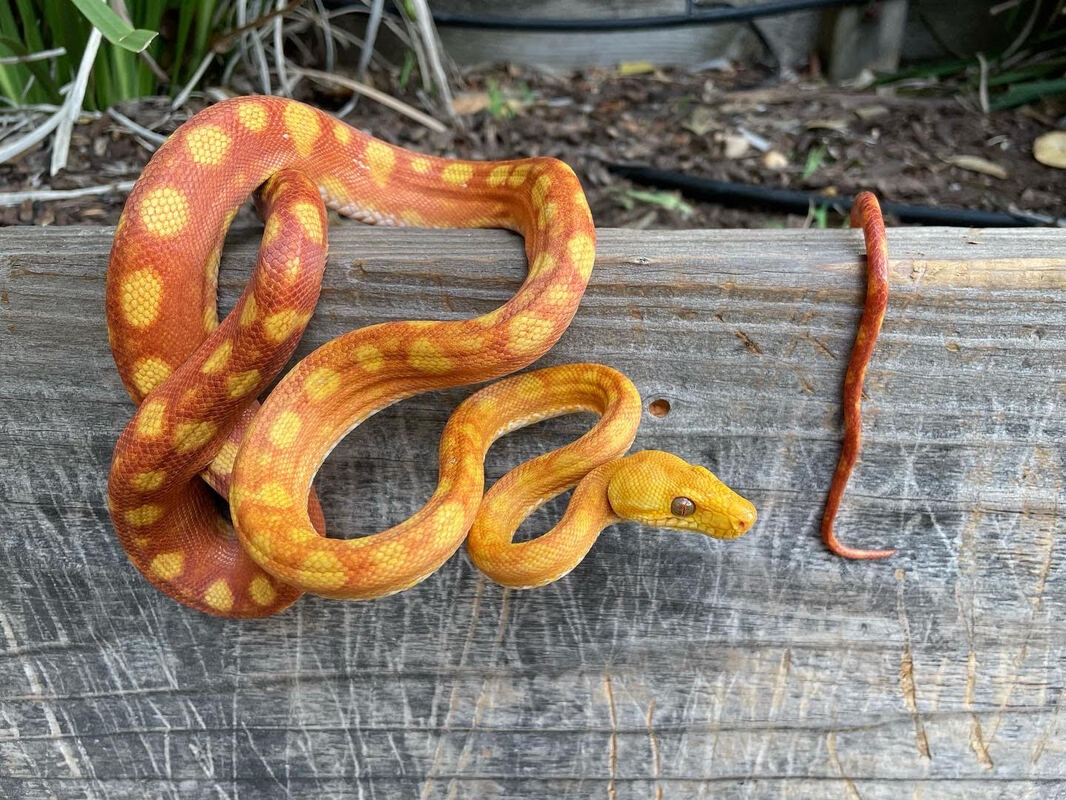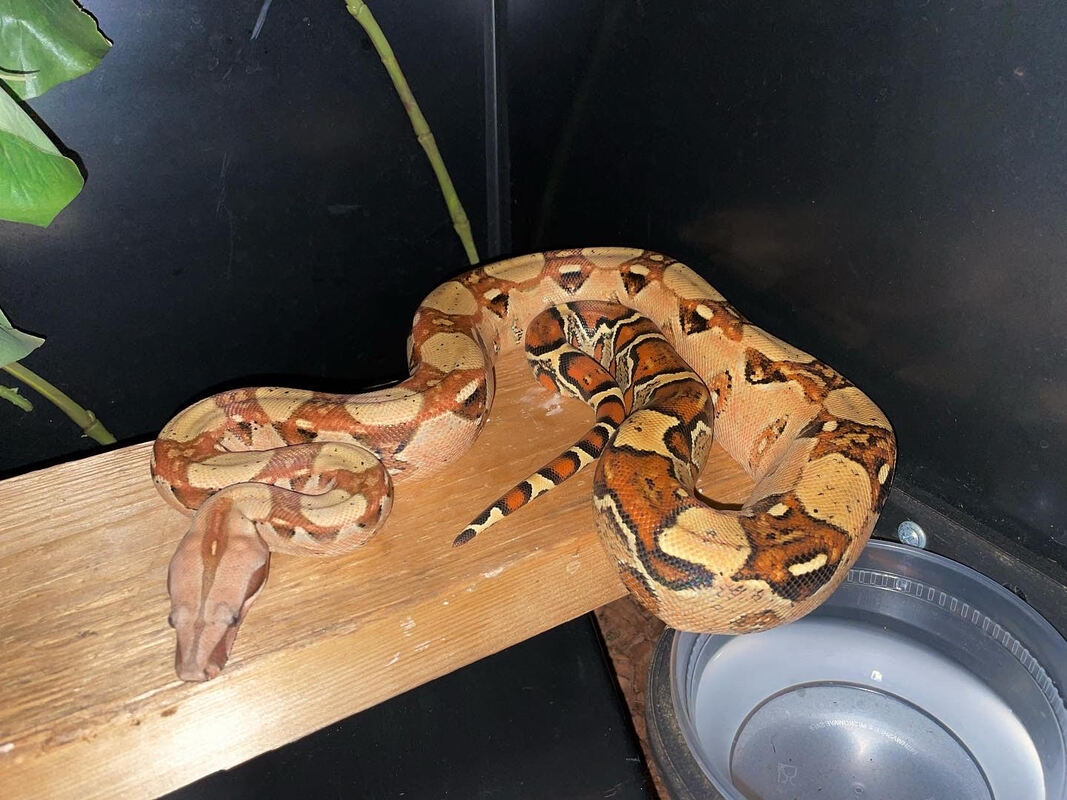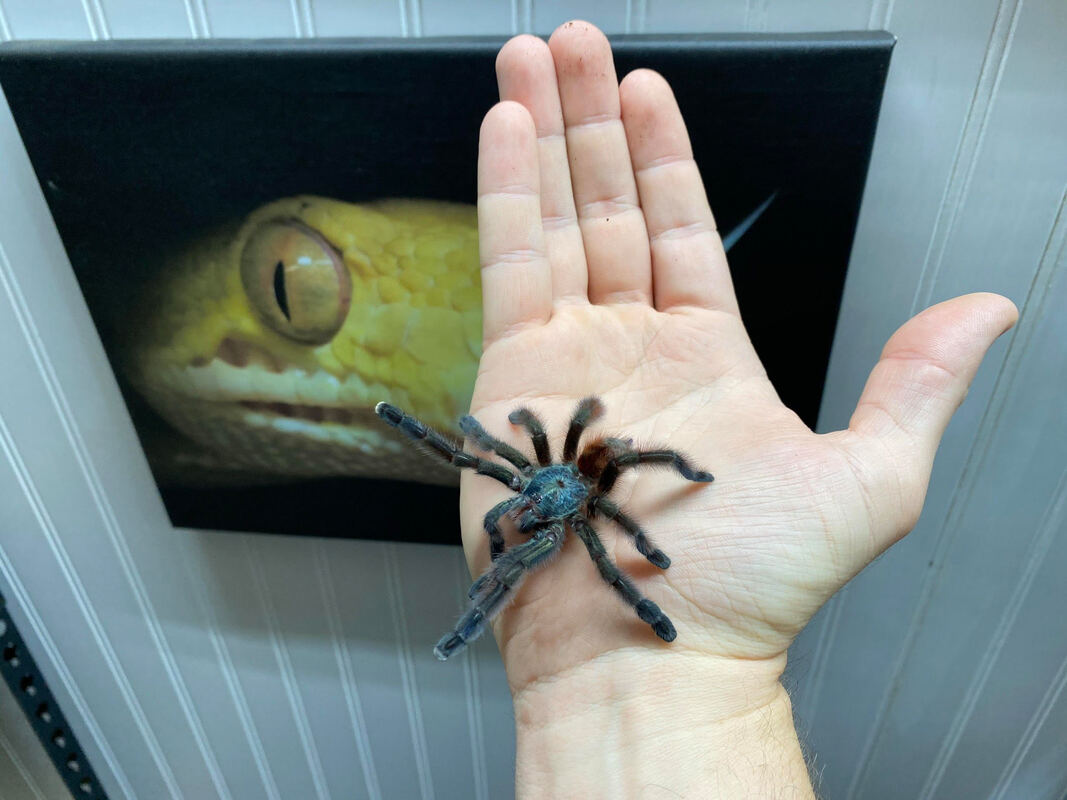* ALL PHOTOS ON THIS PAGE ARE THE PROPERTY OF GODBOLD EXOTICS*
Boas
Amazon Tree Boas:
|
The majority of my collection is comprised of my favorite species of snake, Corallus hortulanus; otherwise known as the Amazon Tree Boa. Almost all of my animals are captive born and bred from a few select breeders in the US that I trust. I should preface that I trust very few people when it comes to keeping, breeding, selling, and caring for reptiles. This means that I have, in my opinion, some specimens that are what I consider irreplaceable. I try to lean on more females than males as I like to give females the year off after having a litter. My main focus regarding this species is:
|
Barranquilla Locale Columbian Boas (Bi):
|
I'm not a "hybrid guy" to say the least. However, these boas share traits of both species. Their scale counts don't match imperator, nor do they match constrictor. Their natural range also has overlapping territories of both species. It's therefore, a safe assumption, the DNA testing would most likely reveal that this species has hybridization in the wild. My person opinion is that they should receive subspecies status or a full species designation. It should be noted I'm no taxonomist so this is just my personal opinion on what I've read through my own research. I'm working with a lone pair that I purchased from Vin Russo. They're probably one of my favorite boas and worth keeping, so much so... that I would sell some of my Amazons before I got rid of these. I absolutely love them - from color to temperament to husbandry, they're hard to beat!
Group: 2.2 |
Brazilian Rainbow Boas:
I keep only a couple pairs of Brazilian Rainbow Boas. All were produced by Trace Hardin of Hardin Herpetological and are from various lines/pairings
Group: 2.2
Group: 2.2
Tarantulas
|
I keep a variety of tarantula species for fun. I've kept them many times and gotten out of them for a number of reasons. Now... I've selected a few species I'd like to keep with the intent to breed. Having worked with old and new world species, I feel like I'm ready to take the next step which is to try me hand at breeding them. Again, I've gotten completely out of inverts, and have just acquired the following species in which I'll be raising up in hopes of pairing within the next couple of years:
1.) Avicularia sp. British Guiana (metallica) - New World 2.) Amazonius germani (formerly Pseudoclamoris gigas) - New World 3.) Brachypelma albiceps - New World 4.) Caribena versicolor - New World 5.) Cyriopagopus sp. hati hati - Old world 6.) Ephebopus murinus - New World 7.) Grammostola pulchra - New World 8.) Homeomma chilensis - New World 9.) Phormingochilus sp. rufus - Old World 10.) Orphnaecus philippinus - old World 11.) Theraphosinae sp. Piura - New World |
Species I've bred and produced viable offspring:
1.) Amazon Tree Boas - Corallus hortulanus
2.) Red Ackie Monitors - Varanus acanthurus
3.) Crested Geckos - Correlophus ciliatus
4.) Mertens Geckos - Phelsuma robertmertensi
2.) Red Ackie Monitors - Varanus acanthurus
3.) Crested Geckos - Correlophus ciliatus
4.) Mertens Geckos - Phelsuma robertmertensi


